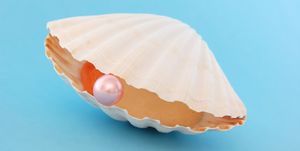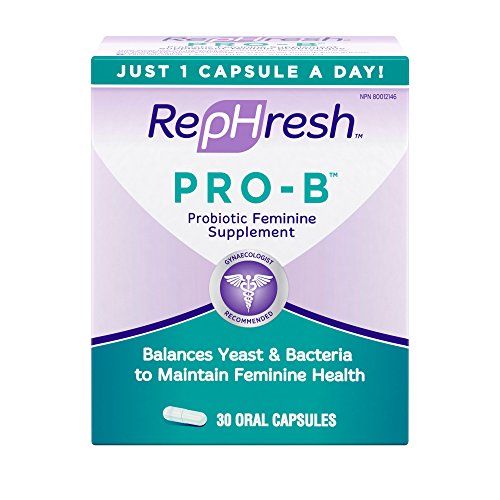Is Your "Yeast Infection" Actually Something Else?
Issues down south, no matter how mild, are never exactly rays of sunshine. But before you can treat them and move on with your life, first you have to figure out what the heck is going on—which can be surprisingly tricky given that a lot of vaginal conditions have similar symptoms: itching, discharge, weird smells… ugh.
When something feels off, you may assume it’s a yeast infection, but it’s actually more likely to be an issue called bacterial vaginosis (BV). Both are common and entirely treatable, but knowing which one is plaguing your vagina is essential to getting the correct treatment.
Watch the video for the 411 on telling the two apart, and then skim the Q&A for more on how to keep your lady parts healthy.
Q: What exactly is bacterial vaginosis, and how is it different than a yeast infection?
A yeast infection is pretty much what it sounds like—an overgrowth of yeast in your vag. “Everyone has some yeast, so the yeast in and of itself isn’t the issue,” explains Lauren Streicher, M.D., the Medical Director of the Northwestern Medicine Center for Sexual Medicine and Menopause, and a paid spokesperson for RepHresh. It’s when the yeast (technically a fungus called “candida”) gets out of control in your vagina that it becomes problematic and uncomfortable.
Although they can be unpleasant, yeast infections are no biggie. And most women will get one at some point in their lives, according to the U.S. Office on Women’s Health.
Per the CDC, bacterial vaginosis is the most common vaginal infection in women 15 to 44.
Bacterial vaginosis, on the other hand, is caused by an overgrowth of bacteria, not fungus. “Normally, the vagina is populated with lactobacilli, which are good bacteria that keep the pH of your vagina in balance,” Streicher explains. But when the good bacteria get outnumbered by “bad” bacteria called Gardnerella vaginalis, that’s when you have a case of BV. “The majority of times someone has an abnormal discharge or irritation, it’s not yeast, it’s bacterial vaginosis,” she says.
Q: What causes a yeast infection? And how the heck do you get bacterial vaginosis?
Both yeast infections and BV involve the balance in your vagina getting thrown out of whack—but the causes of these imbalances are entirely different.
Antibiotics, a weakened immune system, and douching can all cause a yeast infection to develop. Even certain types of birth control that increase your estrogen levels can make you more susceptible to the yeast overgrowth, according to the Mayo Clinic.

In cases of BV, doctors aren’t 100 percent sure how “bad” bacteria start outnumbering the good lactobacilli in your vagina, but it likely has something to do with your vaginal pH levels, Streicher says. “An alteration in vaginal pH is going to be one of the triggers that allow the bad bacteria to move in,” she explains. “Semen, for example, is one such trigger because it has a high pH. Menstrual blood also has a high pH, so some women have this problem after their period or after sex.”
Q: How can I tell if what’s going on with my vagina is a yeast infection or bacterial vaginosis?
Yeast infections tend to be very, very itchy, Streicher says. You might also experience swelling of the vulva and a burning sensation, along with a thick, white, odorless discharge (that kind of looks like cottage cheese). In some cases, you might also have pain when you pee or have sex.
BV can also cause pain and itching, according to the Centers for Disease Control and Prevention (CDC), but the key difference is that the condition “has a discharge which is a little more watery and there usually is a slightly fishy odor, particularly after sex,” Streicher explains.
Q: What’s the best way to treat BV and yeast infections?
Letting bacterial vaginosis go untreated can increase your risk of sexually transmitted infections.
You can fight yeast infections with an OTC or prescription oral medication or vaginal suppository. A typical course of treatment lasts between one day and a week, according to the Mayo Clinic.
If you have bacterial vaginosis, a quick round of antibiotics (usually either a pill or cream) from your doctor can squash it. While technically BV might go away on its own, you shouldn’t bet on it. “If you have BV and it goes untreated, you’re at higher risk for acquiring a sexually transmitted infection, you’re at higher risk for pelvic inflammatory disease, and you’re also at increased risk for preterm labor,” Streicher cautions.
Q: Should I see my doctor if I think I might have BV or a yeast infection ?
“If you’re not sure if you have a yeast infection or bacterial vaginosis, you don’t necessarily have to go to your doctor’s office,” Streicher says. Call first and talk to your gyno or the office nurse practitioner, who might be able to tell from your description which condition you’re dealing with and get you the right treatment.
“If there’s any concern or doubt, however, or if it’s a recurring problem, a doctor is going to want to do an exam,” Streicher says. “Keep in mind, these two conditions are not the only things that can cause odor, discharge, and irritation, so if it’s not clear, you’re always better off going to see your doctor.”
Q: How can I prevent uncomfortable vaginal issues from happening in the first place?

For yeast infections, changing out of wet clothes after a workout and wearing underwear that let things breathe down there can help. Cotton and bamboo are both super breathable fabrics, and are ideal for women prone to vaginal infections.
BV tends to be a recurring problem—even after you’ve been treated—but being proactive can help you stay fresh. It’s all about keeping that pH in balance, so the good bacteria in your vagina can thrive; early research shows probiotics might be helpful here, explains the Mayo Clinic.
“RepHresh [Vaginal Gel] is also very useful for preventing bacterial vaginosis,” says Streicher. “After you have intercourse, if you use some RepHresh, it’s going to immediately get your pH back in normal range. Same thing after your period.”
Source: Read Full Article



